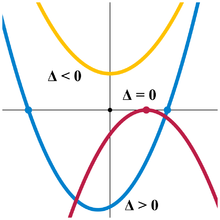User:Saros136
Hi it's me. Length of the sidereal year cited does indeed come from the 1994 VSOP87 paper by Simon et. al. as some sources say. The paper did not present the value; it was derived from the VSOP87 elements presented. To derive a sidereal year from elements takes the rate of change of longitude, from that fixed to the J2000 equinox. The unit of time is the Julian millennium of 365250 days of 86,400 s of uniformly flowing time And get the rate of change at one instant, in days per units of angular change (such as degrees) , by dividing 365250 date by that rate. Then multiply by 360 (if using degrees) to get the days required for the longitude to change by that much.
VSOP87 quantities are calculated as polynomials in powers of T (time) There is a constant+terms in T,T^2,T^3, etc. When T=0, the rate of change is equal to the coefficient of the first degree term. They have it in arc seconds. 1295977422.83429 of them. I want to use degrees, converting to them (dividing by 3600) I get degrees. Dividing this into 365250 gives the days per degree and multiplying by 360 gives the result of 365.256363004 days. Note this equivalent to dividing the number of arcseconds into 473,364,000,000.
Getting the anomalistic year is similar, but the mean anomaly is used. That is equal to rate of change of L -pi (the longitude of perihelion).
hey there
Saros136 08:54, 3 November 2006 (UTC)
it's me again, experimenting. Saros136 08:55, 3 November 2006 (UTC)
G factor
[edit]Murray and Herrnstein introduce the general intelligence factor (g) , an almost universally supported, and very important, construct in psychometry. In a battery of mental ability tests given to a group of people, all the test are positively correlated with each other; those who are above average in one will, on average, be above average on the others. Factor analysis can extract a smaller number of factors to account for the variation in the scores; this is possible because the more two tests measure the same thing, the greater their correlations will be. One factor, g can then be extracted (sometimes after another layer of specific factors are removed). The correlation of the test scores with g is its g-loading; a high one is desirable in a test. g is correlated with a wide range of social outcomes. Some are such as income, academic achievement, job performance, and career prestige, poverty, dropping out, and out-of-marriage childbirth. g correlates with both speed and consistency performance or elementary cognitive tasks (simple ones that can be done by everybody without failure). All of this was mentioned in The Bell curve, and many biologicial and neurological correlates have been discovered since,in addition to the long known ones such as brain size. These include the frequency of alpha brain waves, latency and amplitude of evoked brain potentials, rate of brain glucose metabolism, and general health as some of the best established ones.
sample for my own testing from quadratic formula
[edit]where a ≠ 0. (For if a = 0, the equation becomes a linear equation.)
The letters a, b, and c are called coefficients: the quadratic coefficient a is the coefficient of , the linear coefficient b is the coefficient of x, and c is the constant coefficient, also called the free term or constant term.
Quadratic equations are called quadratic because quadratus is Latin for "square"; in the leading term the variable is squared.

Quadratic formula
[edit]A quadratic equation with real or complex coefficients has two (not necessarily distinct) solutions, called roots, which may or may not be real, given by the quadratic formula:
where the symbol "±" indicates that both
are solutions.
Discriminant
[edit]
■ <0: x2+1⁄2
■ =0: −4⁄3x2+4⁄3x−1⁄3
■ >0: 3⁄2x2+1⁄2x−4⁄3
In the above formula, the expression underneath the square root sign:
is called the discriminant of the quadratic equation.
A quadratic equation with real coefficients can have either one or two distinct real roots, or two distinct complex roots. In this case the discriminant determines the number and nature of the roots. There are three cases:
- If the discriminant is positive, there are two distinct roots, both of which are real numbers. For quadratic equations with integer coefficients, if the discriminant is a perfect square, then the roots are rational numbers—in other cases they may be quadratic irrationals.
- If the discriminant is zero, there is exactly one distinct root, and that root is a real number. Sometimes called a double root, its value is:
- If the discriminant is negative, there are no real roots. Rather, there are two distinct (non-real) complex roots, which are complex conjugates of each other:







